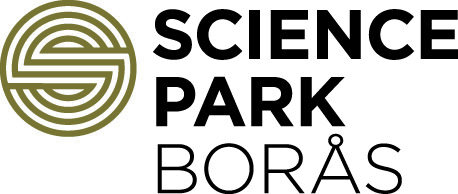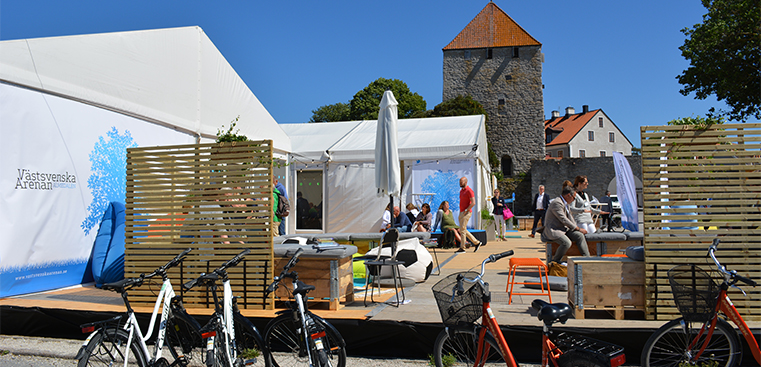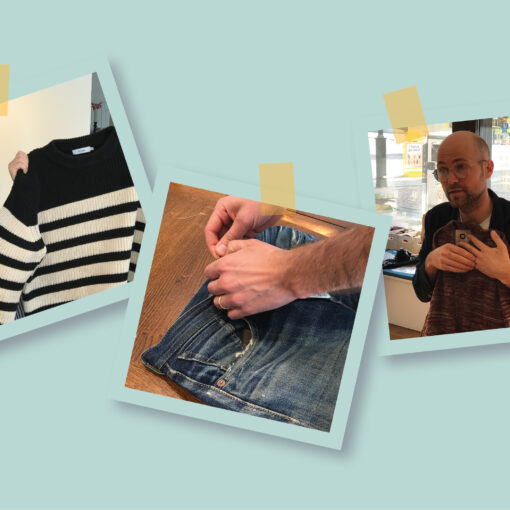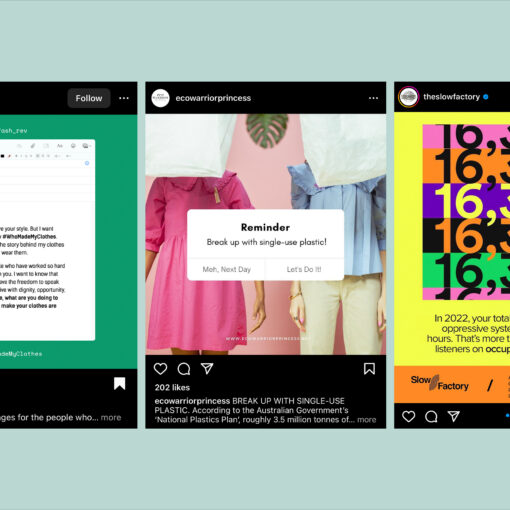F/ACT Movement’s research project goes beyond social media and now through workshops delves into the garments one already owns. Follow what the garment storytelling workshop was all about through pictures!

Why I wear, what I wear? – It is a question that this research project within F/ACT Movement has tried to explore in many ways; one such was through a series of storytelling workshops from April to September. They were conducted with students, professionals from the textile-fashion industry and civilians, who were conveyed before the workshop to get two garments for the workshop – one that is worn the most and another that is not worn often.
The idea through this prior message was for the participants to open and look over their wardrobe and to think on these two ends of the usage spectrum of wardrobe, that can enable them to get the clothes for further enquiry in the workshop. So, the story of the workshop started way before it begun! But how does one just start talking about what one is wearing right now? It can be hard to remember what one wore yesterday, let alone think about why it was chosen and worn in the first place. This was the purpose of the workshop—to provide the space and time to reflect on our clothing choices, so to strengthen or reassess certain relationships we have with our clothing and its usage.
Beginning of the workshop
Storytelling, in the first place, requires people to talk and listen to each other. So, the workshop space was set up in a way that participants sat in groups. They collectively listened to understand why they were there, what they were about to do together and what they intended to take away.
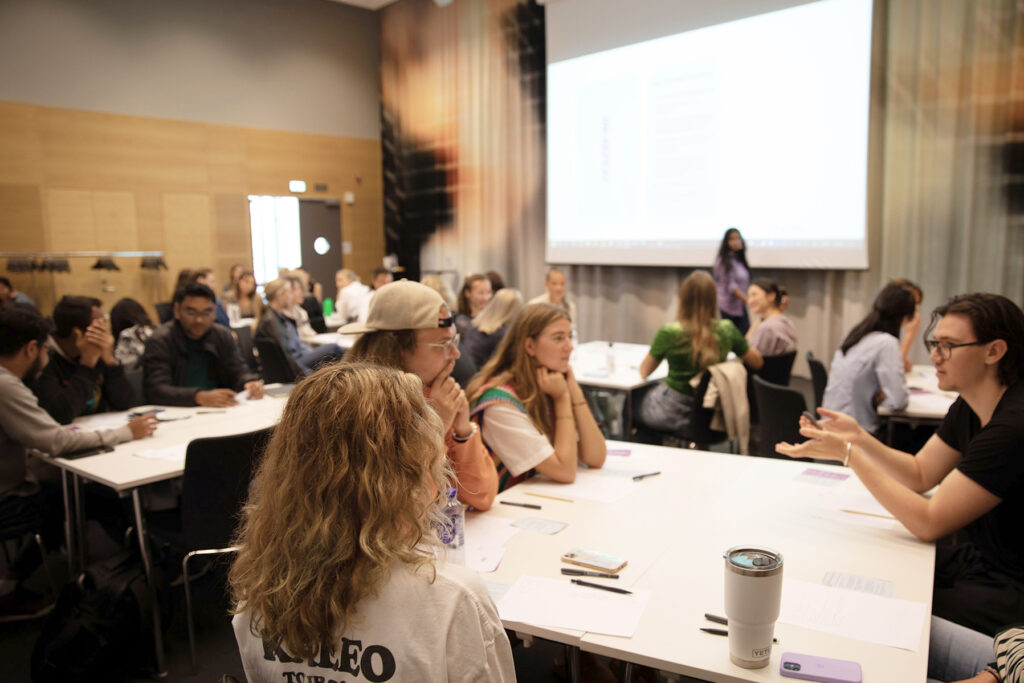
The workshop continued with a group storytelling activity consisting of three cards. The first card, titled ”YOU”, was a ten-minute activity for the participants to get into the groove of storytelling. It revolved around exploring their fashion identities, style preferences, colour choices and fabric textures. The process began with reading the card, reflecting on the prompts, and writing their thoughts on the provided sheet. These notes served as reference points for participants to take turns on narrating their stories. This activity also served in breaking the ice and making everyone feel comfortable with each other.
The second card “ON-REPEAT” was to know about for one’s daily attire, including items one wears almost every other day, essentially encompassing repetitive wear. “HIDDEN IN CLOSET” was the third card for garments that are seldom worn and are often tucked away, remaining hidden and unused. Each of these cards involved a twenty-minute activity, following a similar sequence of reading, writing, and narrating on their garments. If participants, could not the get clothes with themselves, they could refer to their social media posts or image gallery on their phone or they could pick out what they were wearing for the workshop.
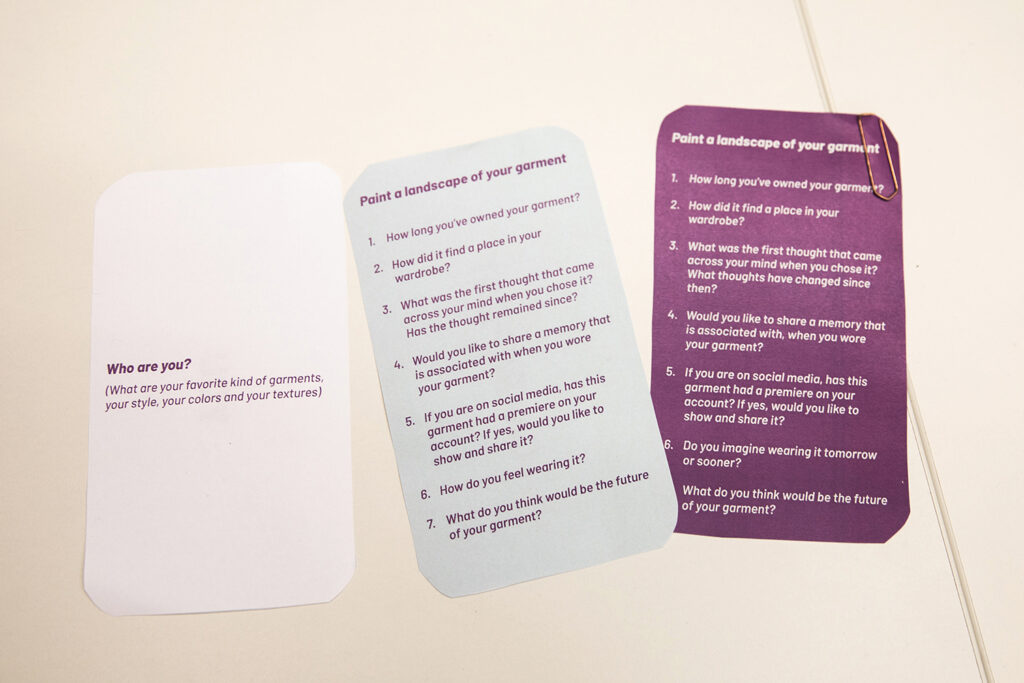
Designing experiences
The questions on the cards were likened to how a film introduces its background, starting by to show the landscape and the sea and then going into the plot. Similarly, these questions were not set in stone, but moreover guided participants through the history, present, and future of their garments, eventually forming their very own story. Through the questions, there was also a focus on understanding each other’s digital and social media footprint of the garments, which could have a direct or indirect influences on one’s buying and consumption behaviour.
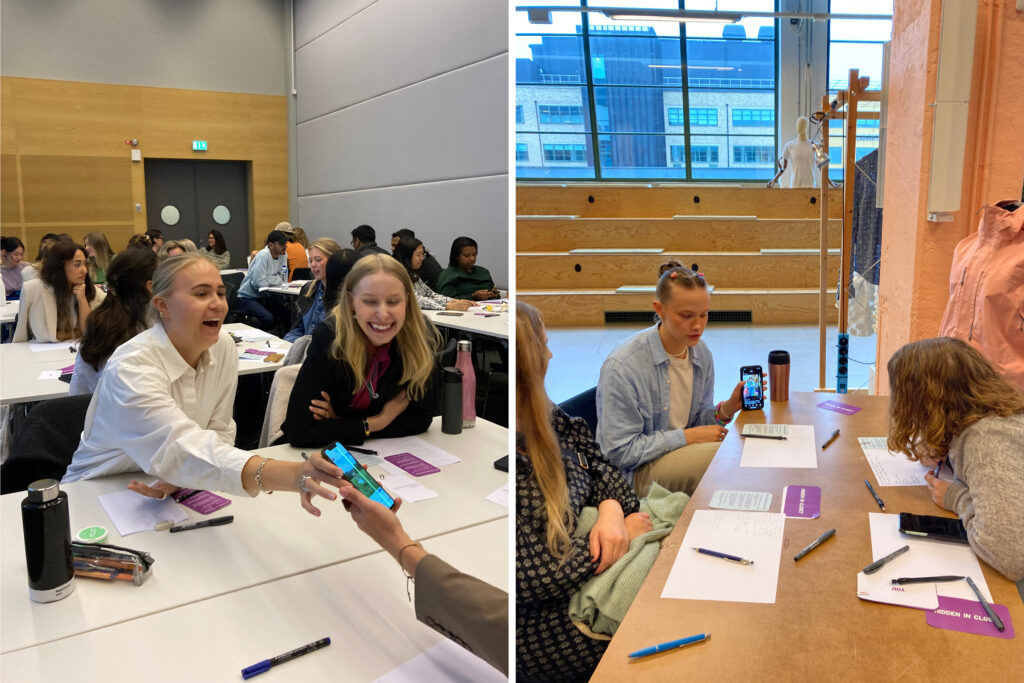
Furthermore, participants were encouraged to be somewhat performative when sharing their garment stories. They could stand up, wear, display, and talk about their garments to everyone.
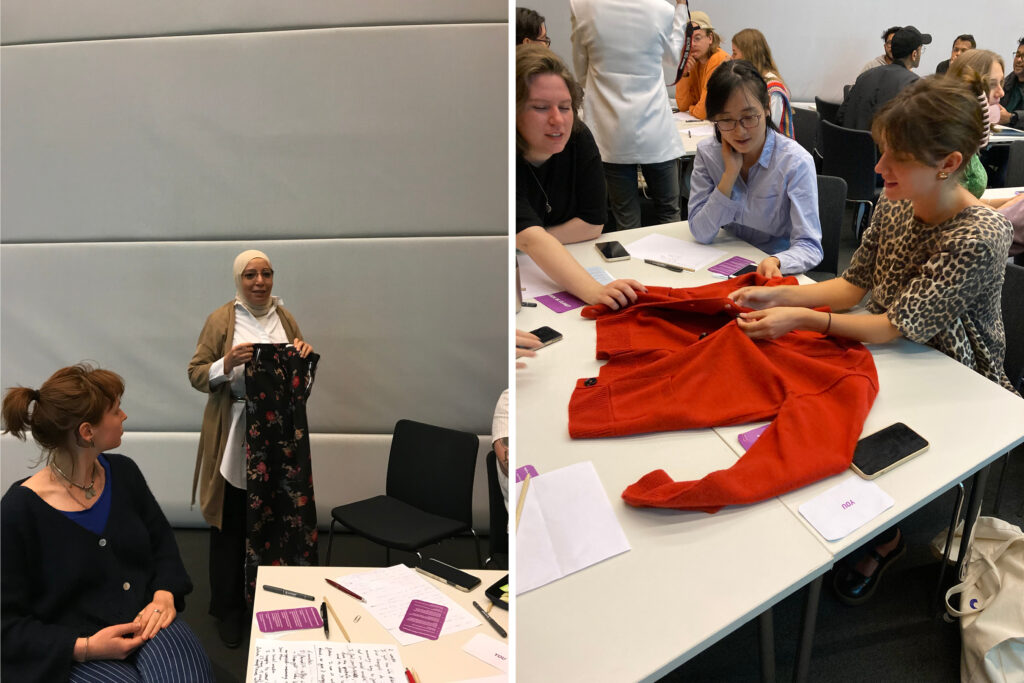
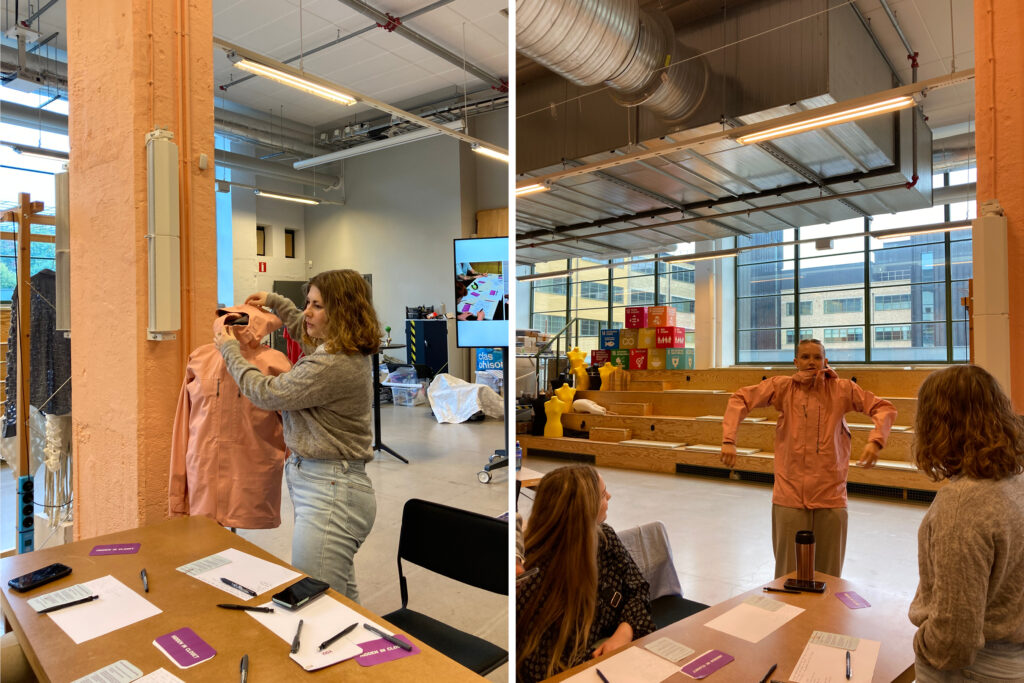
Next came Fika, the most significant and rejuvenating part of the workshop!
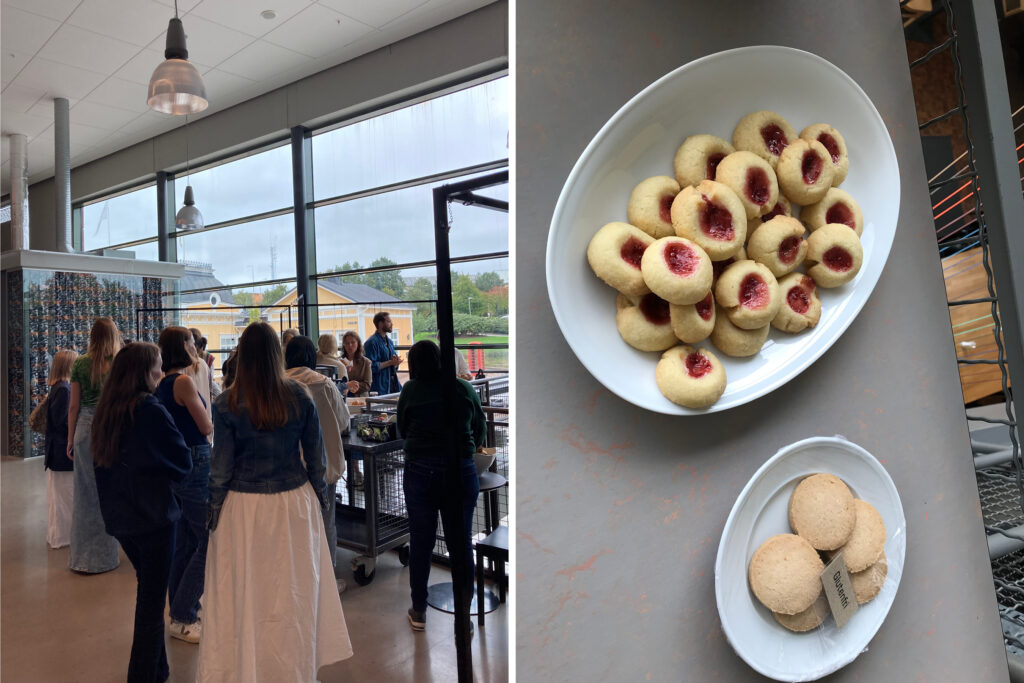
A garment tag that is also a story tag
After some coffee and cookies, the short second activity began. Participants were provided with story tags, specifically designed to help them condense and write the stories that had been narrated earlier by the owner of the garment.
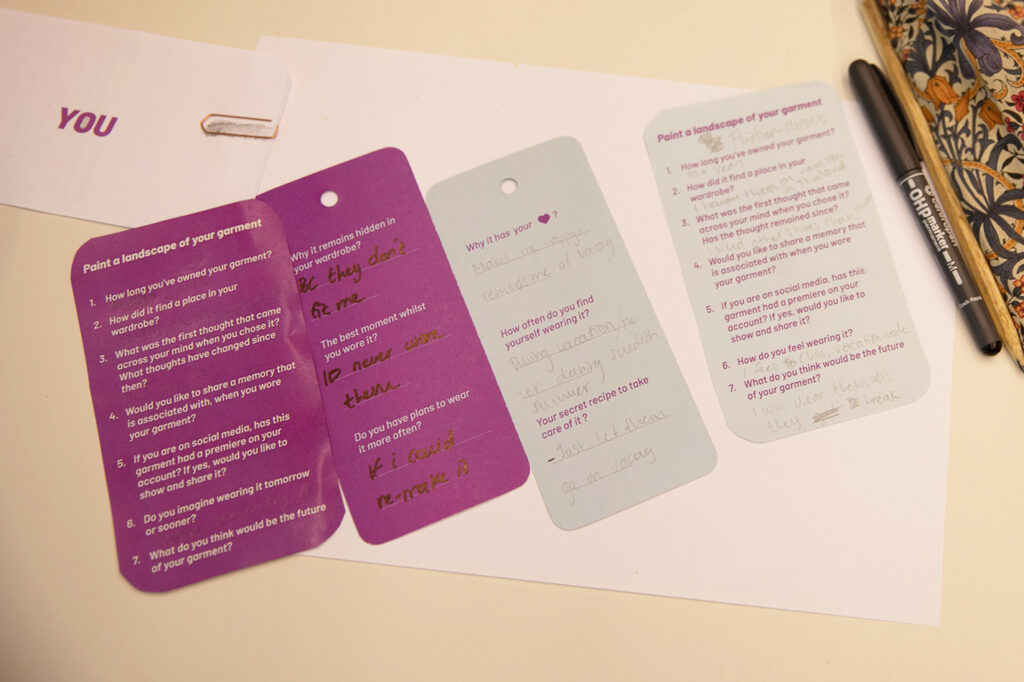
The participants then had to: cut a piece of yarn; thread it through the ON-REPEAT tag and tie it securely to a visible part of the garment worn most frequently. It could be tied to a garments’ brand tag, a buttonhole, or a belt loop. The same steps were repeated with the HIDDEN IN CLOSET tag, attached to an infrequently worn garment.

Next was a mini exhibition!
Then, the participants arranged and showcased the garments along with the story tags on the table or on mannequins. Everyone was encouraged to explore the mini-exhibit, touch and examine each other’s garments while reading through the associated stories and transcending individual groups within the room.
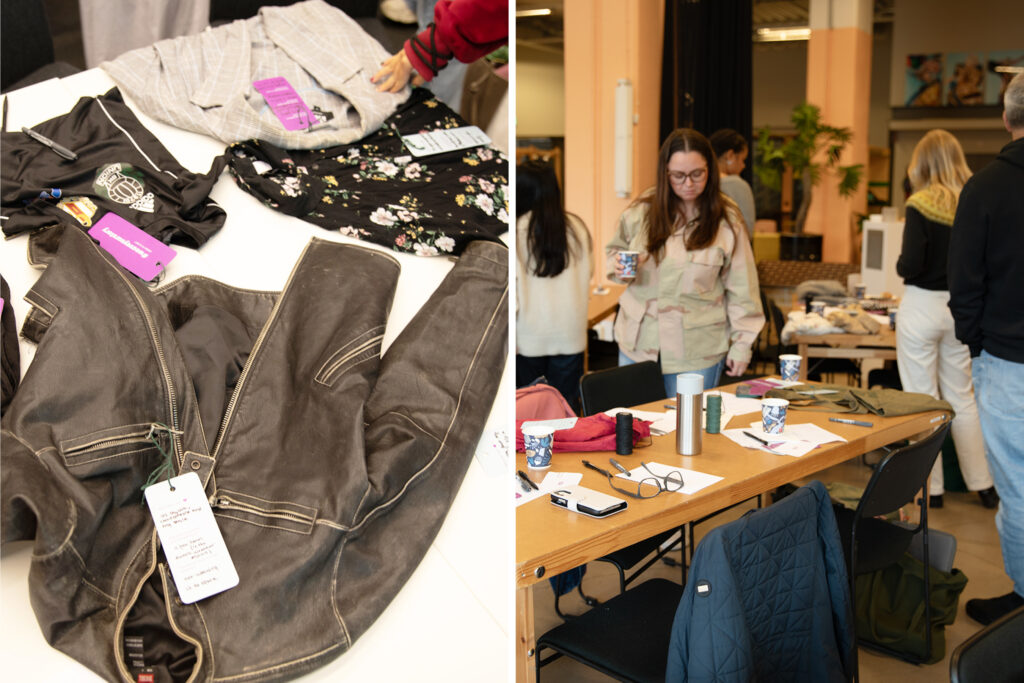
The workshop concluded with participants taking the story tags with them, which had been attached to their garments. These tags will now serve as reminders, making the garments owner ponder over their garment, its usage and their narrated story in the workshop. In this way, the effort was directed for the workshop’s influence to linger long after its formal conclusion.
Images: Victoria Hasselberg Garcia and Jamila Juzer Siamwalla, Science Park Borås
Text: Jamila Juzer Siamwalla
